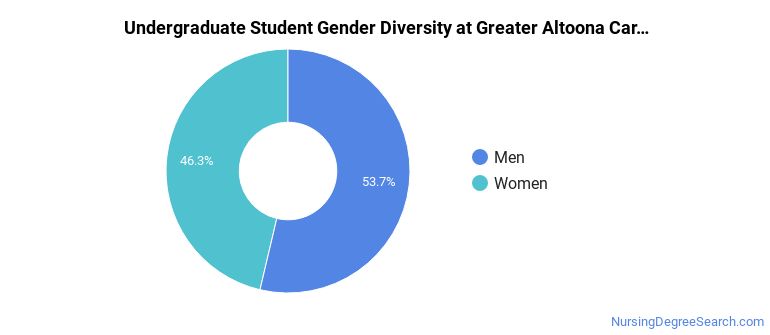Greater Altoona Career & Technology Center Nursing Programs
Located in Altoona, Pennsylvania, Greater Altoona Career & Technology Center is a public institution. The location of Greater Altoona Career & Technology Center is great for students who prefer living in an urban area.
Where Is Greater Altoona Career & Technology Center?

Contact details for Greater Altoona Career & Technology Center are given below.
| Contact Details | |
|---|---|
| Address: | 1500 Fourth Avenue, Altoona, PA 16602-3616 |
| Phone: | 814-941-8324 |
| Website: | www.gactc.edu |
How Do I Get Into Greater Altoona Career & Technology Center?
You can apply to Greater Altoona Career & Technology Center online at: www.gactc.edu/adult-education/how-to-enroll/
Can I Afford Greater Altoona Career & Technology Center?
Student Loan Debt
Almost 66% of college students who graduated with the class of 2018 took out student loans, but that percentage varies from school to school. At Greater Altoona Career & Technology Center, approximately 56% of students took out student loans averaging $6,810 a year. That adds up to $27,240 over four years for those students.
Greater Altoona Career & Technology Center Undergraduate Student Diversity

Gender Diversity
Of the 95 full-time undergraduates at Greater Altoona Career & Technology Center, 54% are male and 46% are female.

Racial-Ethnic Diversity
The racial-ethnic breakdown of Greater Altoona Career & Technology Center students is as follows.

| Race/Ethnicity | Number of Grads |
|---|---|
| Asian | 1 |
| Black or African American | 3 |
| Hispanic or Latino | 0 |
| White | 89 |
| International Students | 0 |
| Other Races/Ethnicities | 2 |
Greater Altoona Career & Technology Center Nursing Concentrations
The table below shows the number of awards for each concentration.
| Major | Undergraduate Certificate | TOTAL |
|---|---|---|
| Licensed Practical/Vocational Nurse Training | 63 | 63 |
| TOTAL | 63 | 63 |
References
*The racial-ethnic minorities count is calculated by taking the total number of students and subtracting white students, international students, and students whose race/ethnicity was unknown. This number is then divided by the total number of students at the school to obtain the racial-ethnic minorities percentage.
More about our data sources and methodologies.
